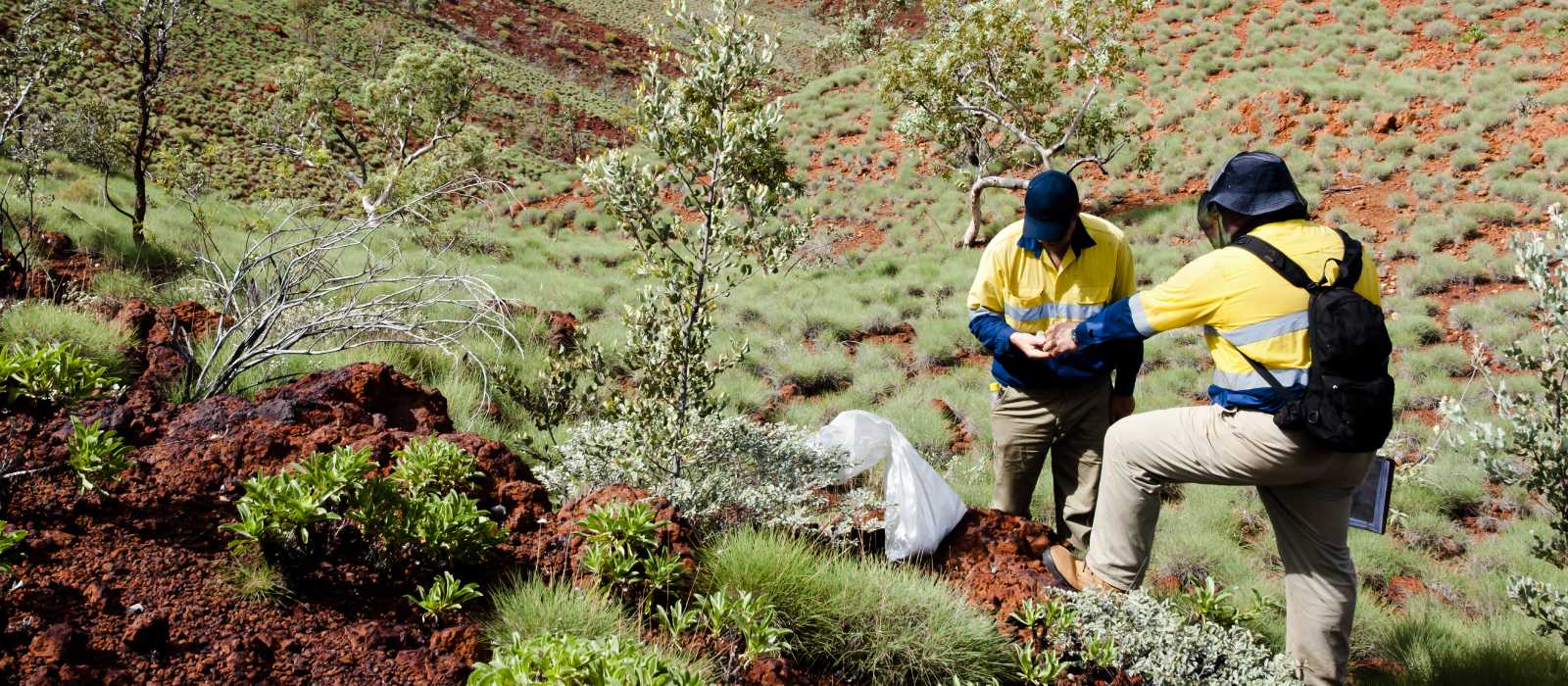Mineral exploration during COVID-19

Exploration is essential to the future of mining, but it is also one of the most easily disrupted activities, especially in times of uncertainty. Can – and will – the mining industry continue to explore during and after the COVID-19 pandemic?
Aside from wars, COVID-19 is the most monumental disruption to the global economy during the modern industrial era. The mining industry is currently reacting to reduced demand for most mineral commodities, as well as dealing with the physical challenges of operating while either avoiding or managing infections. Some operations have had to reduce or cease production for either one of the above reasons. Even so, there is little doubt that commodity demand will resume after the disruption recedes – the unknowns are around to what extent disruptions occur, and for how long.
Exploration is as essential to the future of mining as the demand for minerals: don’t find – can’t mine. But despite its essential nature, exploration is also one of the most easily disrupted functions in mining. Given what is to be mined tomorrow has already been found, exploration can usually be delayed. But in times of uncertainty, exploration is often sacrificed in order to avoid spending cash.
Management of COVID-19 through social distancing is counter to the most basic of human needs – contact and interaction – and has forced adoption of new habits and interactions with an emphasis on avoiding physical contact. On the face of it, exploration as a function should not struggle with such restrictions. Exploration is typically more remote and requires fewer people than run-of-the-mill mining production activities. But exploration is dependent on the health of the mining sector and investment markets, and is therefore subject to short-term fundability and long-term product demand.
Exploration – on a roll!
Exploration activity has been increasing since 2015 (Figure 1). In addition, and far more significantly, 2019 (and 2020 so far) have been what could colloquially be described as a ‘purple patch’ for exploration – with what certainly seems to have been a significant uptick in greenfield discoveries. Granted, these might not be discoveries yet, so for now let’s call them greenfield ‘success stories’ (and I should probably also acknowledge that it will be a matter of time before statistical series confirm the numerical validity of the ‘purple patch’ claim). Large and small companies have reported new mineral finds that have come to light since January 2019.
Crucially, news of these successes – whether discoveries or not yet – have been rewarded by the market in the form of share price rerating of the discoverers and in many cases, companies surrounding them (the ‘nearology’ effect). For exploration companies especially, this has provided a strong incentive, as the tantalising prize of an appreciating share price is as powerful a motivator for companies to explore as it is for investors to support them.
COVID-19 – disruption to exploration?
Unlike many previous downturns in mining, the disruption of COVID-19 is not something the industry has brought on itself through cost excess or exuberance. Regardless of that, a key risk for explorers – and the level of exploration activity within the sector – is of a flow on from the global economy to equity markets and investor sentiment.
Disruption of exploration by COVID-19 is a three part question:
- Does exploration remain practically possible?
- Does the justification for exploring remain feasible?
- Can exploration programs continue to be funded?
1. Practicality – exploring while social distancing
It’s not hard to imagine that exploration is the kind of work that is possible while social distancing. Most of the time meeting the requirements of social distancing is achievable, save for the less frequent but necessary interactions such as resupply and maintenance requirements. These all seem achievable with the deployment of planning and sense. But COVID-19 has imposed travel restrictions that are unprecedented in the modern world. There’s a limit to how much exploration can be undertaken without a physical presence – achievable in isolation, but not while working from home.
For example, it is not currently possible for a geologist living in Melbourne to travel to an exploration site in remote Western Australia. Perhaps an exploration manager can deploy teams remotely – this occurred frequently in the pre-COVID-19 world, but there is now the lingering concern of what to do if something goes wrong. International medivacs are currently not possible in many of the circumstances they previously were, and travel to intervene either requires justification (does ‘I’m suspicious my offsider is slacking off’ cut it ?) or is outright impossible. It’s possible to envisage planned exploration work being delayed, for reasons of risk assessment, inability to deploy or manage once in progress. The priority assigned to exploration work could be ripe for reassessment, and it is quite likely large companies will assign priority differently to small companies.
2. Feasibility – is it still worth exploring?
All minerals companies need to explore – some to replenish reserves, others because exploration is all they do. Saying that, the immediate criticality of exploration to any given company in the minerals sector varies enormously, as does the assessment of risks and how they can be managed. Large and established minerals producers can pause exploration for a time and catch up later. Where sources of production are well defined, the contribution exploration makes is to longer-term planning, so if exploration presents a risk to people, then it isn’t a big deal to put it on hold. At the opposite end of the capitalisation spectrum for junior exploration companies, exploration is all that they do. Stopping work would be tantamount to falling off investor’s radars – and this is significant in the assessment of risk.
The answer to ‘is it still worth exploring?’ might glibly be answered: large miners will probably assess their risks and defer exploration where it has become more difficult to safely manage. Junior explorers may well continue to explore like their life depends on it, because it does. Observation of behaviours since the onset of COVID19 suggests these practices are generally taking place.
3. Can exploration be funded?
Now that is the multimillion dollar question. Exploration activity and investor appetite for miners and risk are intrinsically linked. While a reasonable proportion of exploration is funded by the industry itself (producers reinvesting profits), a significant amount of exploration expenditure (over the last 20 years at least) has been raised from the equity market by junior companies.
If all we go by is the trend over recent years, then the answer is a resounding ‘yes’. The funding capacity of the industry to explore has been improving, and activity has increased commensurately. Generally (though not universally), producers have addressed costs and consequently grown cash margins, which has enhanced their ability to fund exploration. There has also been a remarkable improvement in the ability for exploration stage companies to raise money – from nigh on impossible in 2015, to quite healthy in 2019. Some sectors have fared better than others – gold is a prime example of growing activity. But after a market collapse the likes of what has taken place in February and March 2020 and the accompanying weakness in many mineral commodity prices, there is a distinct possibility that funding becomes a challenge.
Outlook for exploration
In comparison with other mining market-busting events (eg the Global Financial Crisis, the 2011-2015 bust cycle, etc), COVID-19 so far only appears to have had a moderate effect on exploration. The key disruption has been the physical ability to access exploration areas and manage campaigns safely. Junior exploration companies look to be carrying the baton most enthusiastically, especially while they can raise funds.
Investors have recently been enthusiastic for exploration off the back of numerous recent successes. However, the key risk to exploration is funding, and it remains to be seen if global stimulus measures will keep equity markets afloat in the face of the COVID-19 impact on economic activity and earnings, and for miners how commodity prices will perform as the effect washes through the global economy. At the time of writing (late April 2020) – most mineral commodities are well off their 2018 or 2019 levels, having been in recovery trends since 2015. Equity markets are well below their February 2020 peaks, but significantly recovered from their March 2020 lows – teetering between stimulus support and recession collapse. We wouldn’t normally talk about the risk of potential imminent market collapse, because normally we lack a catalyst as clear and present as COVID-19. Equity market weakness is a significant risk, and what happens next will determine if the existing exploration trend continues or falls away.
